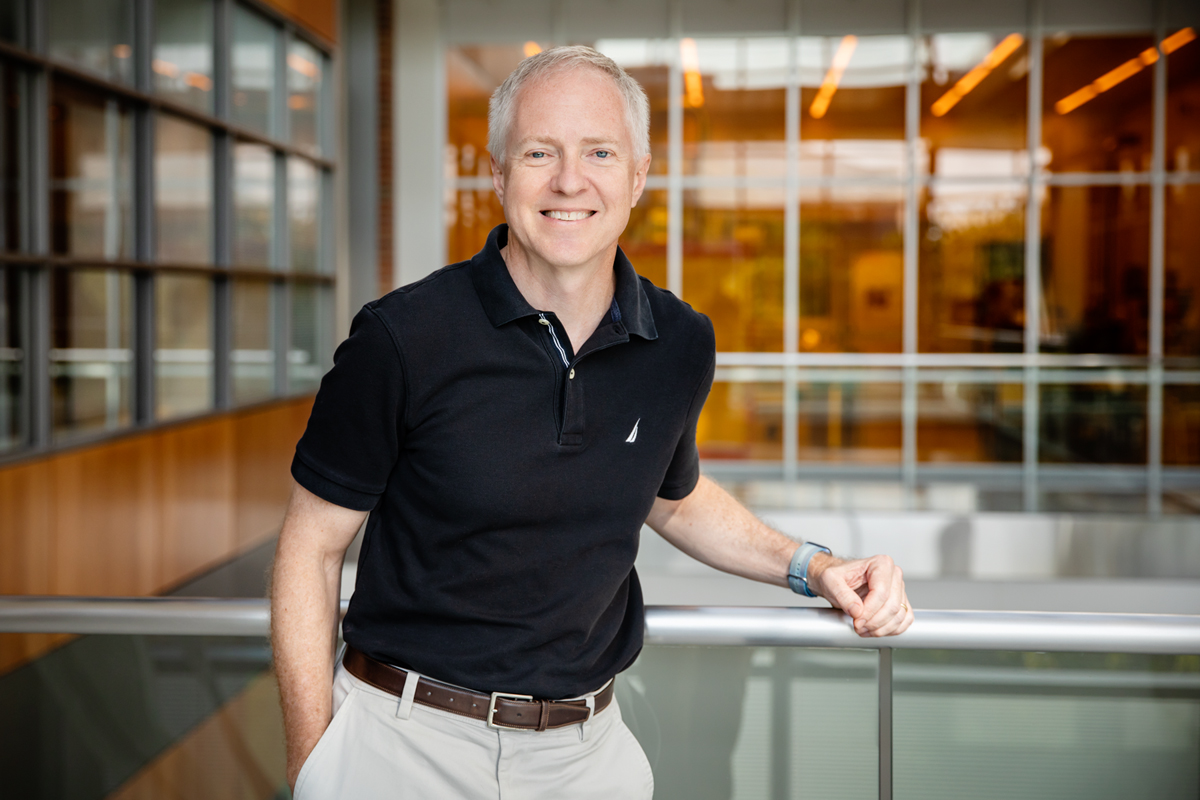When assessing whether or not a tumor is benign or cancerous, a needle biopsy is the usual method of diagnosis. The tissue can then be analyzed to determine what mutations are present that are specific to the patient. Because this method is invasive, it’s generally only used once. During and after chemotherapy, imaging tests are used to monitor the size of the tumor; however, imaging only shows the physical characteristics of the tumor – it fails to monitor what is actually happening to the cells.

Research being conducted through the Holonyak Micro & Nanotechnology Lab is working to develop a device that can detect cancer biomarkers with just a few drops of blood. The method would provide rapid results, enabling the clinician to quantitatively observe the effects of treatment on the tumor by measuring increases or decreases in strategically selected molecules. The team recently received a $2 million grant from the National Institutes of Health (NIH) to fund this work.
“The future of cancer diagnosis is moving towards the idea of “liquid biopsy” in which cancer-specific molecules can be found and measured from easily obtained bodily fluids,” says Brian Cunningham (CGD Director/MMG), the Intel Alumni Endowed Chair with appointments in electrical and computer engineering and bioengineering. “Since each person is genetically unique, each cancer can also be unique, and medicine is driving towards something becoming known as ‘personalized medicine’ in which a highly effective treatment can be selected based on measured characteristics from the patient.”
The team will develop a new approach for detecting a novel class of cancer biomarkers from just a few droplets of blood, such as those collected with a finger prick. Cunningham’s team will use molecules called “micro RNA” that have specific nucleic acid sequences present in a cancerous mutation.
The blood then will be filtered through a device that separates small objects called exosomes, which are carriers of micro RNA, from the cells. (Some researchers hypothesize that exosomes can carry mutated nucleic acids with them that can “seed” cancer in remote parts of the body and start the process of cancer metastasis, the process by which cancer spreads throughout the body). These exosomes will be broken open and examined with a highly sensitive biosensor that can count each cancer-specific molecule.
Cunningham’s team invented a new type of biosensor microscope and a new detection approach so this test can be performed very simply and easily. While this microscope has many applications, the challenging demands of detecting miRNA from blood was a motivating factor in its invention. This technology makes repetition of this test simple so it can be performed as often as necessary to evaluate how exosomes change during and after cancer treatment.
“We think that our approach could be used to enable the physician to pivot from a non-working treatment to a better one based on measured changes in the micro-RNA molecules,” says Cunningham, who is also affiliated with the Cancer Center at Illinois (CCIL). “They can measure how the tumor is responding on a much more detailed and frequent basis than measuring the tumor size by imaging.”
The Illinois research team also includes Manish Kohli at the Huntsman Cancer Institute and Utkan Demirci at Stanford University, as well as chemistry professor Yi Lu (BSD/CABBI/CGD) and professor of epidemiology Rebecca Smith (IGOH).
The potential impact of this research is substantial, according to Rohit Bhargava, CCIL director.
“This NIH grant is bringing together visionary engineers with expertise in devices, chemists and clinicians to transform the way we bring diagnostic capabilities to the patient. Professor Cunningham and his team illustrate the tremendous potential for technology to make accurate diagnoses early and more precisely,” said Rohit Bhargava, professor of bioengineering.
Cunningham’s passion for this research comes from personal experience.
“My parents both passed away from cancer at too young of an age,” says Cunningham. “Since that time, I have been working towards using engineering tools to develop better drugs and diagnostic methods for cancer. My hope is that someday cancer will become a disease that is effectively managed, but to do so will require detailed knowledge about the genetics of each patient’s tumor.”
